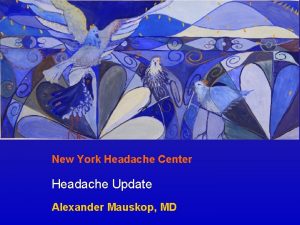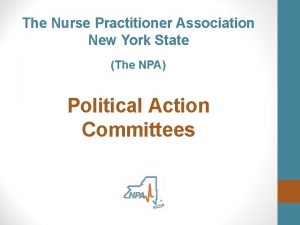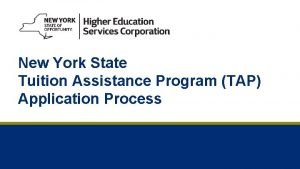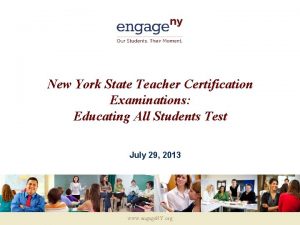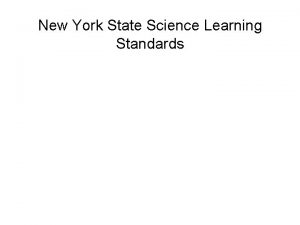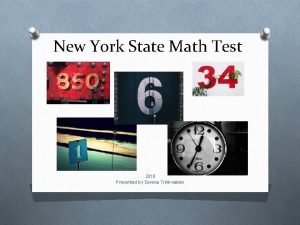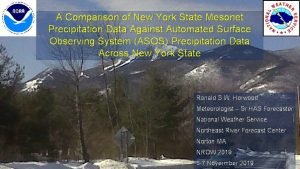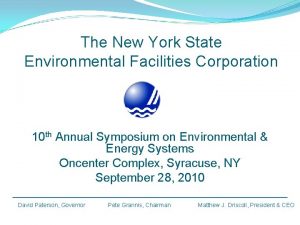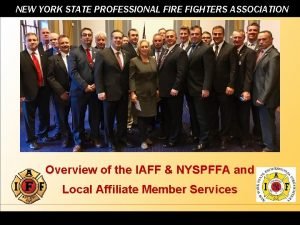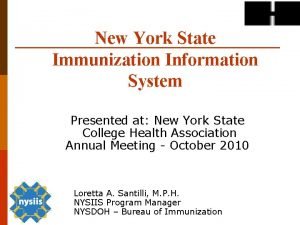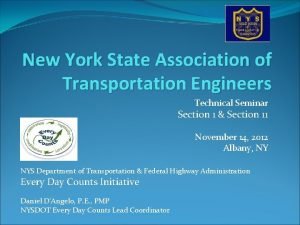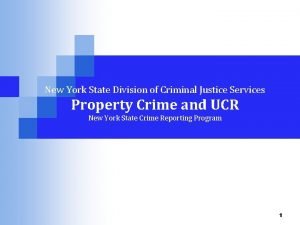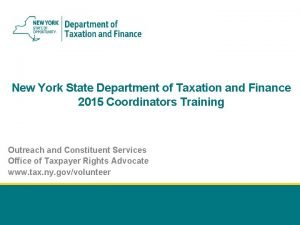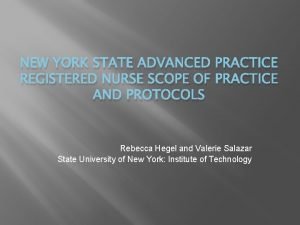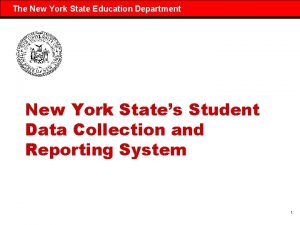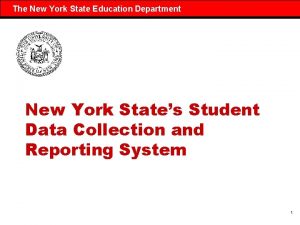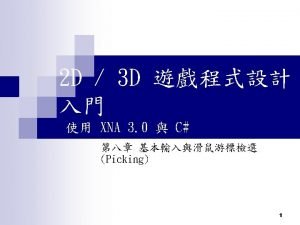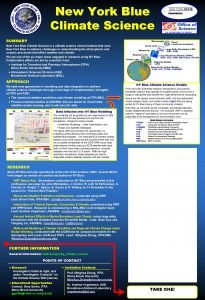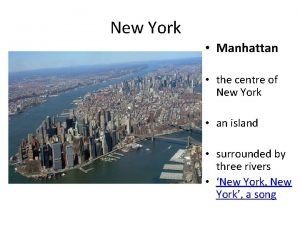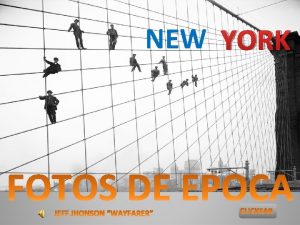R T U New York State Center of


















- Slides: 18

R T U New York State Center of Excellence in Bioinformatics & Life Sciences Discovery Seminar UE 141 PP– Spring 2009 Solving Crimes using Referent Tracking Course Introduction January 15, 2009 Werner CEUSTERS Center of Excellence in Bioinformatics and Life Sciences Ontology Research Group University at Buffalo, NY, USA

R T U New York State Center of Excellence in Bioinformatics & Life Sciences Outline for today • Students will introduce themselves • Students will introduce me – I’ll complete, if necessary • • • Very brief introduction to Referent Tracking Overview of proposed course content My expectations Final Assessment Homework for next week

R T U New York State Center of Excellence in Bioinformatics & Life Sciences Student introduction • I’m interested in: – What you did thus far – Why you take this course – What you expect from this course – Your answers to the following questions: • What is referent tracking ? • What is “referent tracking” ?

R T U New York State Center of Excellence in Bioinformatics & Life Sciences Short personal history Why should students be able to give a summary of my personal history ?

R T U New York State Center of Excellence in Bioinformatics & Life Sciences Why should students … my personal history ? • First order reason: is it worth taking the seminar ? – Am I an expert in the field ? – Am I a good teacher ? –… • Second order reason: – I want to assess whether students have, or are open to acquire, the right sort of mindset to be successful in research and discovery.

R T U New York State Center of Excellence in Bioinformatics & Life Sciences 1977 1959 - 2008 2006 Short personal history 1989 2004 1992 2002 1995 1993 1998

R T U New York State Center of Excellence in Bioinformatics & Life Sciences Ultimate goal of Referent Tracking A digital copy of the world

R T U New York State Center of Excellence in Bioinformatics & Life Sciences Requirements for this digital copy • R 1: • R 2 A faithful representation of reality … of everything that is digitally registered, what is generic scientific theories what is specific what individual entities exist and how they relate • R 3: • R 4 … throughout reality’s entire history, … which is computable in order to … … allow queries over the world’s past and present, … make predictions, … fill in gaps, … identify mistakes, . . .

R T U New York State Center of Excellence in Bioinformatics & Life Sciences In fact … the ultimate crystal ball

R T U New York State Center of Excellence in Bioinformatics & Life Sciences The ‘binding’ wall r t i o ? t h ig d o t w o H A cartoon of the world

R T U New York State Center of Excellence in Bioinformatics & Life Sciences Purpose: reality and interpretation Is opening a window a crime ? Are these crimes ?

R T U New York State Center of Excellence in Bioinformatics & Life Sciences Course contents • Words – sentences – statements – and what, if anything at all, they denote • Different views on reality • Realism-based ontology • Reasoning Applied to solving crimes

R T U New York State Center of Excellence in Bioinformatics & Life Sciences My expectations • You come to class • You participate in discussions Grading 10% 20% – Providing opinions – Asking questions • You finish homework (10%) 20% – Correctly – In time • Do the final test (10%) 50%

R T U New York State Center of Excellence in Bioinformatics & Life Sciences Use UBlearns !!!

R T U New York State Center of Excellence in Bioinformatics & Life Sciences The final test: case to analyze • In July 1984, 9 -year-old Dawn Hamilton was raped and murdered. In August 1984, Kimberly Ruffner was imprisoned for another rape and attempted murder. A composite sketch of the perpetrator in the Hamilton case was shown on the local news. Two anonymous callers advised that Kirk Bloodsworth looked like the composite. Bloodsworth was convicted of the murder. In 1993, new forensic tests discovered semen on Hamilton's underpants. DNA tests proved it was not Bloodsworth’s. In September 2003, the DNA sample recovered from Hamilton's underpants was identified as that of Ruffner.

R T U New York State Center of Excellence in Bioinformatics & Life Sciences The test • Identify all particulars involved and give them a Unique Instance Identifier • Give the minimal set of universals required to describe the particulars • Classify all particulars in terms of some prespecified categories • State all relevant relationships (at relevant times) that hold –Between the particulars and the universals –Amongst (some of) the particulars themselves

R T U New York State Center of Excellence in Bioinformatics & Life Sciences Procedure for the final test • I will present the case during the class of April 9, and act as if it were the final test. • From April 10 until April 13, you can send me by email (ceusters@buffalo. edu) requests for topics to be rehearsed during the April 16 class. • You will collectively be tested during the class of April 23. The method is that I will ask a question, invite a person to answer, and then invite others to provide comments. You will be rated on your participation in this process, the correctness of your answers and the solidity of your argumentation. • I suggest to analyze the case before April 9. You may collaborate with other students. • When you prepare for the exam, you may make notes, and bring these notes to the class. You may also bring any other material you think you need, including any course material, (even a laptop with wifi access or your mother). • You will receive a score for this test by the end of the class. The score counts for 50% of the total score. • If you are unhappy with the score, or want to improve it, you may submit BY EMAIL to ceusters@buffalo. edu a written analysis of the case not later than April 30.

R T U New York State Center of Excellence in Bioinformatics & Life Sciences Homework for this week • On September 9 th, 1935, Carl Austin Weiss shot Senator Huey Long in the Louisiana State Capitol with a. 35 calibre pistol. Long died from this wound thirty hours later on September 10 th. Weiss, on the other hand, received between thirty-two and sixty. 44 and. 45 calibre hollow point bullets from Long's agitated bodyguards and died immediately. Sorensen, R. , 1985, "Self-Deception and Scattered Events", Mind, 94: 64 -69. • Questions: – Did Weiss kill Senator Long ? – If so, when did he kill him ? • Send me your answer – – in Power. Point by email (ceusters@buffalo. edu) not later than January 19, 10 PM, Answers should include reference to or citations from any source or document that you used to formulate an answer
 Mauskop
Mauskop New york regional census center
New york regional census center Nurse practitioner association of new york state
Nurse practitioner association of new york state Tap application status
Tap application status New york state teacher certification exams
New york state teacher certification exams New york state learning standards science
New york state learning standards science 2018 nys math test
2018 nys math test Nerfc
Nerfc New york state vegetable
New york state vegetable Gigp 30
Gigp 30 New york state professional firefighters association
New york state professional firefighters association Ny immunization registry
Ny immunization registry New york state association of transportation engineers
New york state association of transportation engineers Nysid catalog
Nysid catalog Department of criminal justice services ny
Department of criminal justice services ny Nysrc
Nysrc Latham traffic circle
Latham traffic circle Nytprin
Nytprin Nys nurse practitioner scope of practice
Nys nurse practitioner scope of practice
